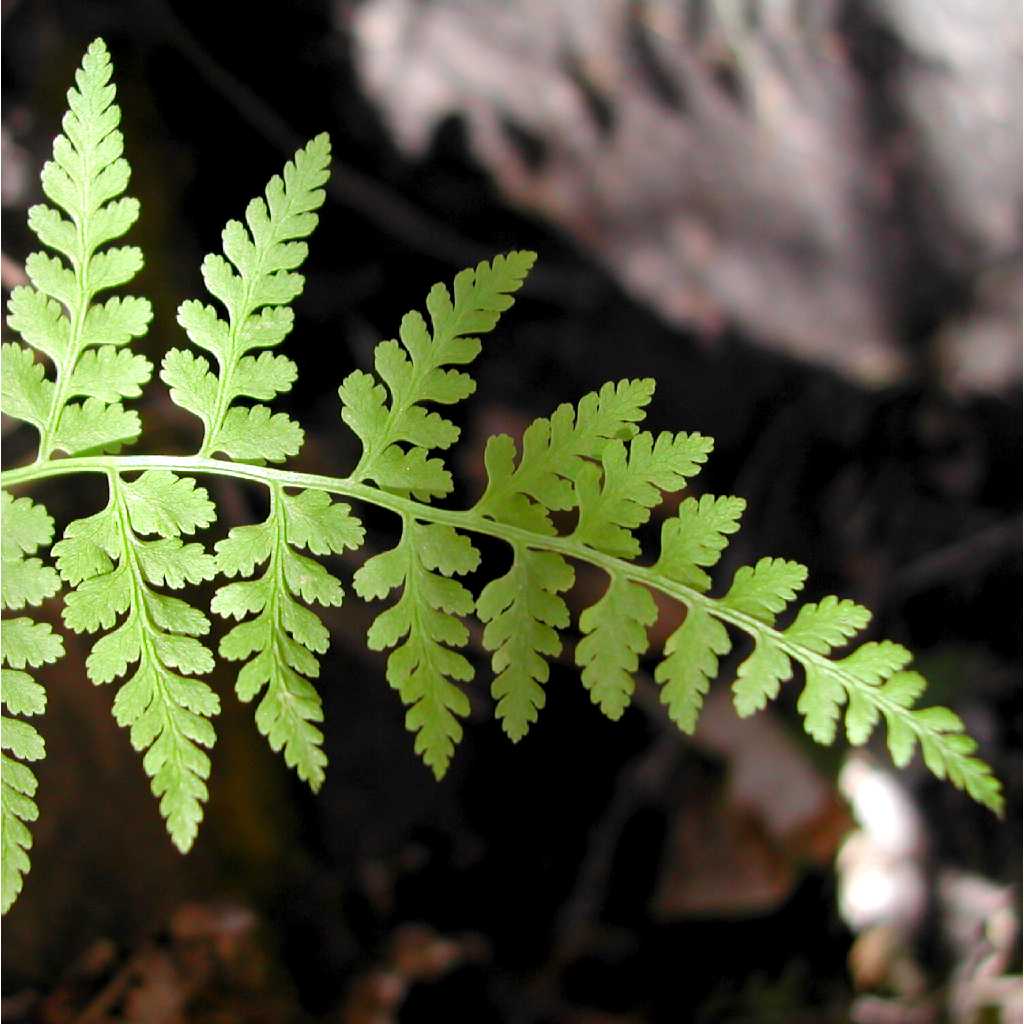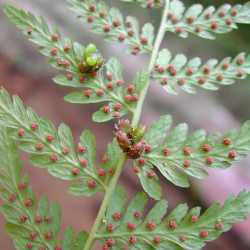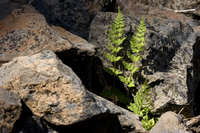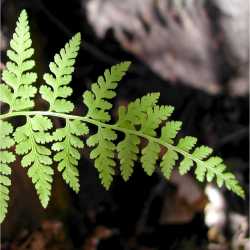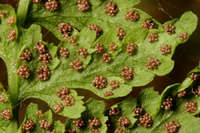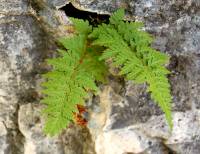Plants terrestrial or on rock. Stems short- to long-creeping, stolons absent. Leaves monomorphic, dying back in winter. Petiole 1/3--3 times length of blades, base often swollen and persisting as trophopod over winter; vascular bundles 2, lateral, round or oblong in cross section. Blade ovate-lanceolate to deltate, 1--3-pinnate-pinnatifid, gradually reduced distally to a pinnatifid apex, membranaceous to herbaceous. Pinnae not articulate to rachis, segment margins crenulate, dentate, or serrate; proximal pinnae not reduced or 1 pair slightly reduced, sessile or petiolulate, equilateral or ± inequilateral, if inequilateral basiscopic side more narrowly cuneate; costae adaxially grooved, grooves continuous from rachis to costae; indument absent or of uniseriate, multicellular hairs in pinnae axils or of unicellular, gland-tipped hairs abaxially, absent adaxially. Veins free, simple or forked. Sori in 1 row between midrib and margin on ultimate segments, round; indusia ovate to lanceolate, hoodlike and arching over sorus toward margin, attached to receptacle base on costal side, persistent to ephemeral or often obscure at maturity. Spores brownish, echinate, or verrucate. x = 42.
Cystopteris is a taxonomically difficult genus at the species level. Especially troublesome is the worldwide and polymorphic species C . fragilis sensu lato. To maintain it as a single species with several varieties would be easiest (and least controversial). This approach, however, may not accurately reflect true evolutionary history.
Petiole slender, with 2 bundles, scaly only at the base, much shorter than the blade in our spp.; blade mostly 2-4 times pinnate or ternate-pinnate; veins forking, free, reaching the margin, slightly thickened at the tip; sori rotund, each borne on a veinlet that continues to the margin; indusium hyaline, basiscopic (i.e., attached under the proximal margin of the sorus on the entering veinlet), ±hood-like, its free tip arched over the sorus (towards the distal margin of the pinnule) and commonly thrown back as the sorus expands, sometimes tiny and caducous; delicate woodland ferns with deciduous lvs, the petiole-bases not persistent. 10, cosmop.
Our spp. of Cystopteris enter into a polyploid complex that compromises the essential differences among the species. C. bulbifera and C. protrusa are diploid, 2n=84. C. fragilis is tetraploid (2n=168) in our area, but is considered to include some hexaploids and octoploids in the Old World. Two other established polyploids combine the features of C. bulbifera with those of C. protrusa (in one case) or C. fragilis (in the other). C. tennesseensis Shaver (tetraploid) may be an alloploid derived from C. bulbifera and C. protrusa, and C. laurentiana (Weath.) Blasdell may be an alloploid derived from C. bulbifera and C. fragilis var. fragilis. Both of these apparent alloploids usually have some poorly developed or abortive bulbils along the lf- rachis, and they tend to have some minute glands on the indusia. In C. tennesseensis the blade is widest at the base, as in C. bulbifera, whereas in C. laurentiana it is widest above the base, as in C. fragilis. C. laurentiana is northern, occurring from Nf. and Que. to Wis. and n. Minn., with a disjunct station in Centre Co., Pa. C. tennesseensis is more southern, occurring from Va. and Ky. to Kans. and Okla. There are also some ±sterile polyploids in this complex. C. ةllinoensis R. C. Moran (triploid, 2n=126) may reflect hybridization of C. bulbifera with C. fragilis var. mackayi, and C. طagneri R. C. Moran (tetraploid, 2n=168) may reflect hybridization of C. tennesseensis with C. fragilis var. mackayi.
Gleason, Henry A. & Cronquist, Arthur J. 1991. Manual of vascular plants of northeastern United States and adjacent Canada. lxxv + 910 pp.
©The New York Botanical Garden. All rights reserved. Used by permission.


